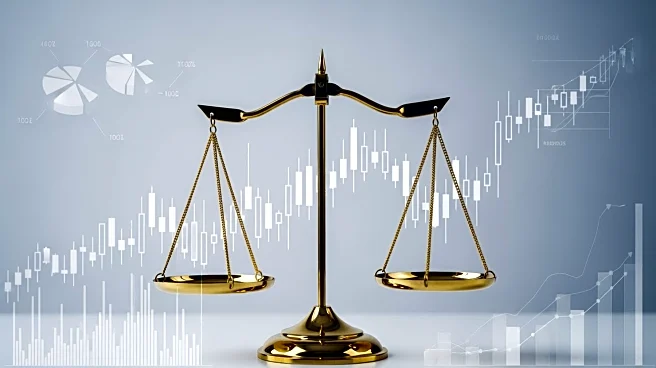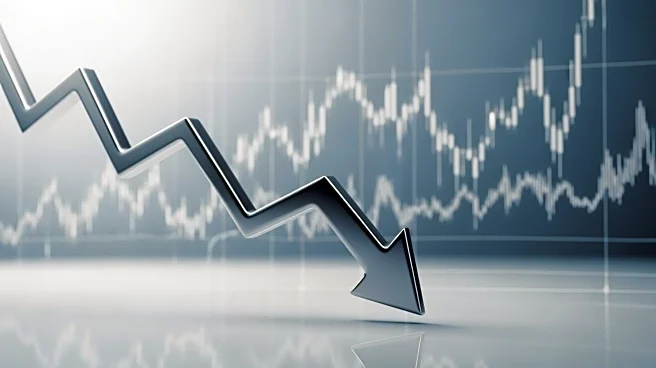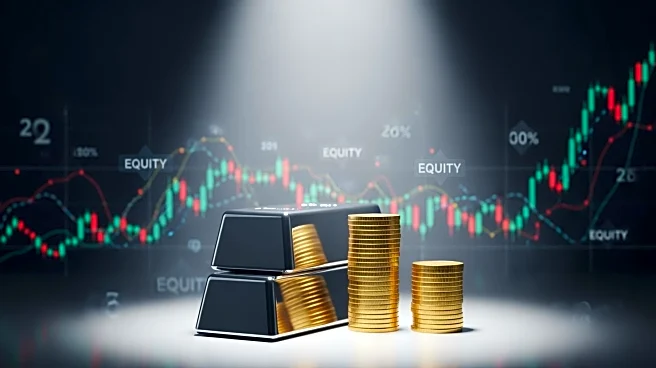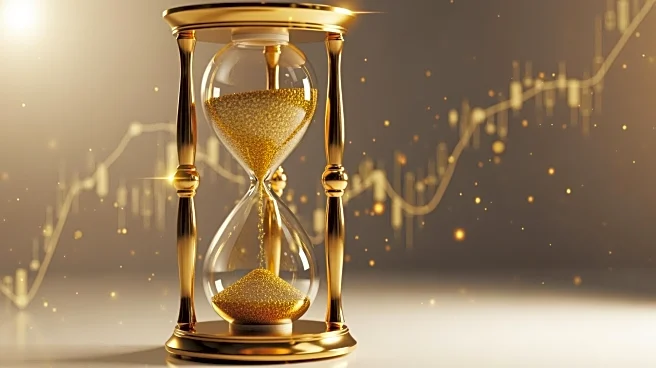What's Happening?
The U.S. dollar index has recently surged, reaching a six-month high by breaching the 100 level, a significant psychological threshold. This increase in the dollar's value has exerted considerable pressure on precious metals, particularly gold and silver.
Gold futures have experienced a sharp decline, dropping $70 to trade at $3,944, marking a 1.7% loss. This decline in gold prices is attributed to the strengthening dollar, which has led investors to shift away from non-yielding assets like gold in favor of dollar-denominated holdings. Similarly, silver futures have also been affected, plummeting $1.18, or 2.45%, to settle at $46.85. The dual nature of silver as both a precious and industrial metal makes it more susceptible to changes in risk sentiment, further exacerbating its decline.
Why It's Important?
The strengthening of the U.S. dollar has significant implications for various asset classes, particularly precious metals. As the dollar gains strength, it typically leads to a decrease in the attractiveness of non-yielding assets like gold and silver, as investors seek higher returns from dollar-denominated investments. This shift can lead to increased volatility in the precious metals market, affecting traders and investors who rely on these assets for portfolio diversification and hedging against inflation. Additionally, the broader impact of a strong dollar can be seen in equity markets, where indices like the S&P 500 and Nasdaq 100 have registered losses, highlighting the interconnectedness of currency and equity markets.
What's Next?
If the dollar continues its upward trajectory, it could further pressure precious metals and other risk assets. Market participants will likely monitor upcoming economic data and Federal Reserve announcements for indications of future monetary policy, which could influence the dollar's strength. Additionally, geopolitical tensions and global economic conditions will play a role in shaping investor sentiment and market dynamics. Traders and investors may need to adjust their strategies to navigate the evolving landscape, balancing the risks and opportunities presented by a strong dollar.
Beyond the Headlines
The current dynamics in the currency and precious metals markets underscore the complex interplay between macroeconomic factors and asset valuations. The dollar's strength not only impacts commodity prices but also has broader implications for global trade and economic stability. As the dollar appreciates, U.S. exports may become less competitive, potentially affecting domestic industries reliant on international markets. Furthermore, the ongoing shifts in investor preferences highlight the importance of understanding market correlations and the potential for rapid changes in asset valuations.













